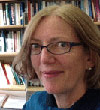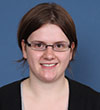
 “I sometimes refer to myself as having OCD and sometimes refer to myself as having an eating disorder.”
“I sometimes refer to myself as having OCD and sometimes refer to myself as having an eating disorder.”
Living with multimorbidity may constitute one of the biggest challenges to how contemporary medicine is practised. The number of people living with multimorbidity is predicted to double in one decade—that is from 1.9m to 2.9m between 2008 and 2018. [1,2]
At the same time, there is a growing awareness of the need to address the problems multimorbidity presents to current medical practice, as reflected in the recent National Institute for Health and Care Excellence (NICE) guidance in the UK. [3,4] These problems include the management of GP consultation times when confronted with multiple diagnoses and the pharmaceutical dangers of multiple discrete prescriptions for these diagnoses. The NICE guidelines do not question the fundamentals of diagnosis, but accounts from those experiencing multimorbidity demonstrate a need to rethink this key aspect of medical practice.
There is to date little detailed knowledge based on firsthand accounts by those living with multimorbidity, and yet this form of knowledge is essential for public health if we intend to address the wide ranging difficulties that people negotiating multimorbidity routinely face when seeking diagnosis and treatment.
Our own work privileges such embodied experiences as interpreted through the specificities of particular times and places. [5] The firsthand accounts of those living with so called “multimorbidity” reveal how this is embodied as an integrated experience rather than as a set of discrete conditions. As such, the experiences of those living with “multimorbidity” breach and blur the boundaries and categories that are fundamental to diagnosis. An example is “Kelly’s” experience below, a composite “ethnographic fiction” (an ethical approach to reporting that builds on several individual firsthand accounts so as to capture firsthand experiences, while at the same time protecting confidentiality [6,7]):
I’ve grown so weary of trying to work out which specific symptoms might be relevant to making a diagnosis of yet another condition. For instance, at my last appointment I complained about not being able to get to sleep at night. The doctor said this “insomnia” (another problem to add to the list) could be caused by any one of the ailments previously listed in my medical records. It has just become impossible to isolate any one of my existing (or new) symptoms to a particular illness category.
Kelly illustrates well how those living with “multimorbidity” are exposed to and incorporate the medical forms of multiple sets of symptoms and diagnostic labels. When dealing with the health services, they feel that they must continually try to rework their experiences into acceptable formats for presentation.
Clinicians’ specific aim to try to isolate particular diagnoses from other diagnoses leaves people feeling excluded from some diagnoses and treatment processes. This can be hugely damaging to emotional wellbeing and to a sense of identity for those living with multiple conditions, and some research participants no longer engage at all with mainstream medical care.
The NICE guidance offers a welcome step towards dealing with the growing experiences of multimorbidity in terms of the medical management of diagnosed coexisting conditions. However, we propose a more radical rethink of practice in order to reconfigure understanding and management of these conditions as a singular and unified experience.
Firsthand accounts show how modes of medical thinking are inconsistent with the difficult bodily variables experienced by those living with multiple conditions. As greater attention is being given to dealing with the growing number of those living with multimorbidity, we need to possibly reconsider the organisation of the spaces of diagnosis and treatment to make more room for multiplicity, contestation, ambiguity, and uncertainty.
Lindsay-Ann Coyle studied human geography at the University of St Andrews before winning an ESRC funded doctoral studentship at Durham University. She has been an active member of Durham’s Centre for Medical Humanities and was awarded her doctorate in geography by Durham University in 2016.
Sarah Atkinson is professor of geography and medical humanities at Durham University. She is an associate editor on the Edinburgh Companion to the Critical Medical Humanities and a member of the ESRC What Works Centre for Wellbeing evidence programme on community wellbeing.
Competing interests: We have read and understood BMJ policy on declaration of interests and declare the following interests: None.
References:
- Department of Health (2012). Report. Long Term Conditions Compendium of Information: Third edition.
- http://www.kingsfund.org.uk/time-to-think-differently/trends/disease-and-disability/long-term-conditions-multi-morbidity#morbidity [Accessed 4.11.2016].
- National Institute for Health and Care Excellence. Multimorbidity: clinical assessment and management (NICE clinical guideline 56). 2016.
- Farmer C, Fenu E, O’Flynn N. Clinical assessment and management of multimorbidity: summary of NICE guidance. BMJ 2016;354:i4843.
- Coyle, L.A. (2016) Not fitting in: Doctoral Thesis, Faculty of Social Science and Health, Durham University.
- Inckle, K. (2010) Telling tales? Using ethnographic fictions to speak embodied “truth.” Qualitative research 10 (1) pp27- 47.
- Bruce, T. (2014) A spy in the house of rugby: Living (in) the emotional spaces of nationalism and sport. Emotion, space and society 12 (1) pp32- 40.
